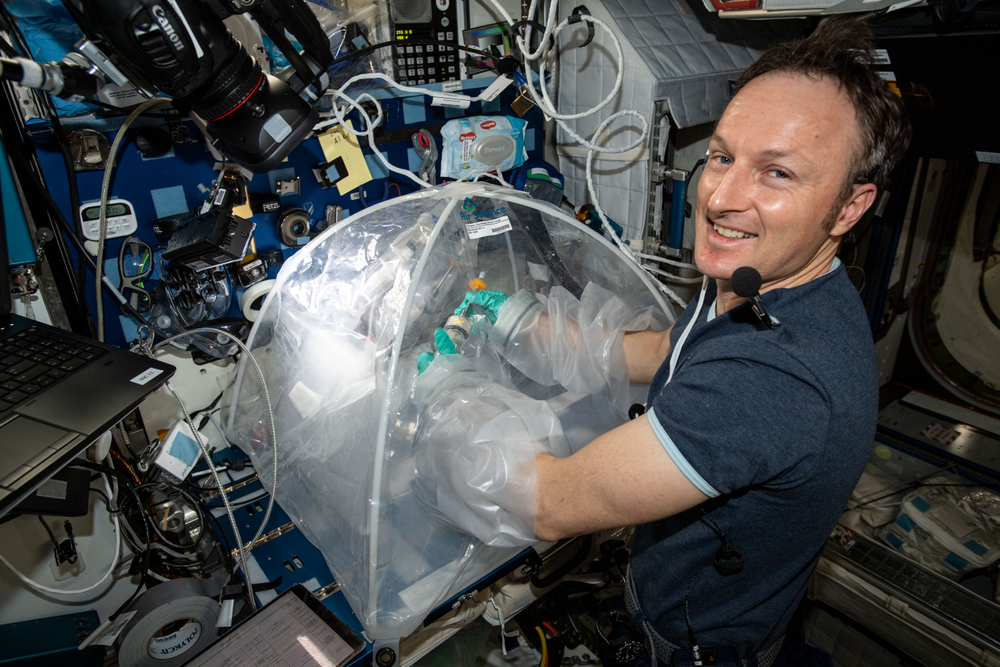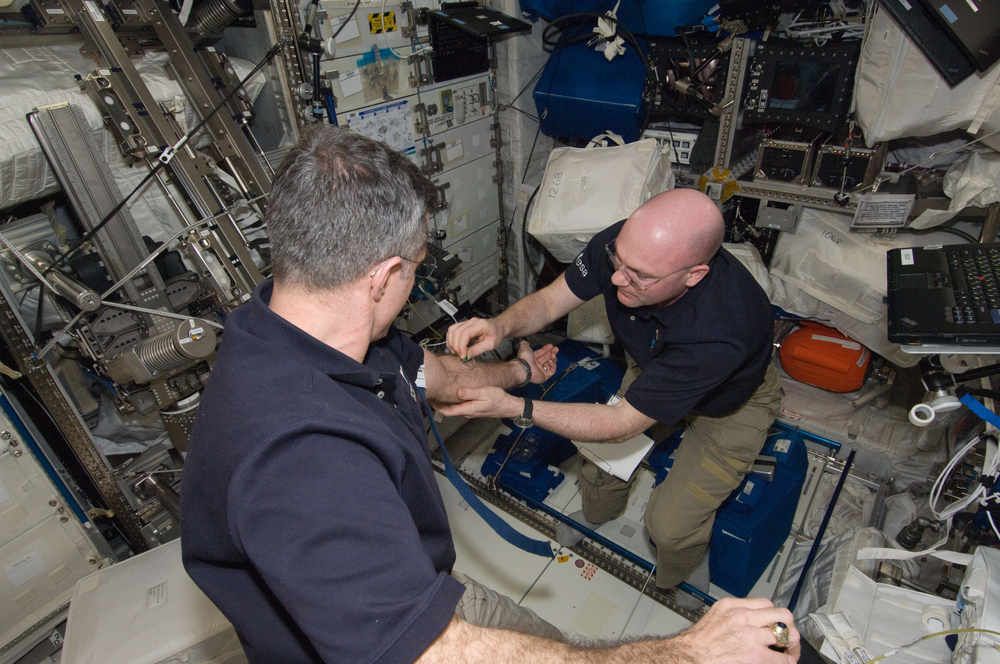Station Science Top News: Aug. 25, 2023
Researchers verified that a device to produce concrete in microgravity meets the requirements for ease of use and safety in space and can produce samples suitable for determining their physical and mechanical properties. The device could support development of ways to produce concrete quickly, inexpensively, and in sufficient quantities for construction of habitats for lunar and planetary exploration.
The ESA’s (European Space Agency) Concrete Hardening investigation examines how concrete hardens in microgravity, analyzes its properties, and compares different mixtures of cement, water, sand, simulated lunar regolith or dust, and other additives. These analyses help direct the development of materials suitable for construction of structures on future space missions.

***
Researchers demonstrated that on-orbit material degradation detectors (ORMADDs) can be used to monitor and assess the condition of materials in space. The devices provide on-orbit, real-time measurement of atomic oxygen, an elemental form of oxygen that corrodes materials and represents a major challenge for space travel.
Tel Aviv University Satellite-1 (TAUSAT-1), launched by JAXA (Japan Aerospace Exploration Agency), used ORMADDs in a CubeSat to monitor the effects of energetic particles in low Earth orbit. Measurements of atomic oxygen (AO) made by these devices were comparable to computerized simulations on the ground. AO is dominant in low Earth orbit’s residual atmosphere and found high in the Venusian and Martian atmospheres. AO exposure erodes organic space-facing materials, changing their texture, thermo-optical properties, and mass loss.
***
Researchers identified multiple biochemical and immune measurements to assess the impact of spaceflight on physiology at the individual level and across astronaut subjects. These measurements could be part of personalized health monitoring to detect, characterize, and prevent potential adverse health events during spaceflight.
Integrated Immune assessed a flight-compatible strategy to monitor changes in the immune systems of individual crew members. The researchers recommend implementing a personalized approach to establish baseline characteristics of each crew member, which would enable detection of deviations that may represent adverse medical events. They suggest that preventing adverse outcomes on long-duration flights requires additional countermeasures such as enhanced nutrition and immune-disorder medications.








